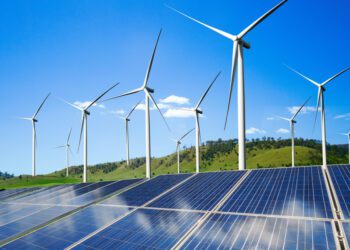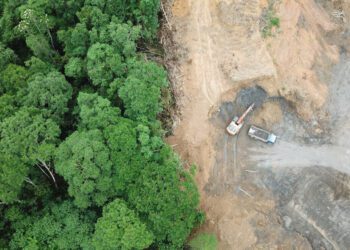It’s common knowledge, especially following last week’s International Energy Agency report, that the world’s governments have failed keeping up with their own climate change promises.
That is why as the world prepares for the COP26 conference in Glasgow, Scotland, starting Oct. 31, analysts are watching whether the world’s largest emitter of greenhouse gases, China, is actually on track to meet its own climate objectives.
China has pledged to have carbon dioxide emissions peak “around 2030” if not earlier, en route to net-zero emissions by 2060.
It could certainly happen: a combination of central government authority and a national commitment to technological change mean the country could actually succeed.
But it’s far from certain.
As the assembly line for the world, China cranks out 28 percent of global greenhouse gases, although it is worth mentioning that carbon output per person is lower than many other countries, including some developed ones, like Canada.
“Amid the growing wave of governments around the world setting targets for reaching net zero emissions, no pledge is as significant as China’s,” declare the authors of the IEA’s roadmap to carbon neutrality in China.
Yet potential obstacles could include a property crash, a domestic economic downturn and an insatiable demand for energy that can only be met by fossil fuels. An outbreak of hostilities over Taiwan likely wouldn’t help.
Others question whether Xi, who said last week he won’t be attending the Glasgow summit, can simultaneously navigate a recently articulated fight against inequality—his “common prosperity” agenda—at the same time as meeting the much-touted climate goals.
Even as Beijing instructed its banks to stop lending for the construction of international coal powered plants, the country has just announced it is responding to a domestic electricity shortage by upping fossil fuel generating capacity at home.
The 2030 target for peak carbon output should be relatively attainable, however, because planners had set the goal in a way that would make it certain not to miss, and that Beijing might use the COP26 conference to announce it would reach that objective even sooner.
“The challenge is tremendous,” said political economist Wei Shen, a British scholar, who along with Canada’s Mark Jaccard and many others is already working on next year’s Intergovernmental Panel on Climate Change (IPCC) report. “It is one of the most inefficient economies in the world in terms of carbon intensity.”
On the positive side, Shen said, China’s top-down system of government has guided dramatic environmental successes in the recent past. He cites the central government’s moves to reduce urban air pollution following a red alert and public outcry in 2015, taking it from from horrible to merely bad.
But he said an authoritarian system of government can be a double-edged sword. Beijing’s pressure on regional governments to raise GDP at all costs has been blamed for creating overbuilding in the property sector. Pressure on local authorities to reach climate targets may have contributed to recent electricity shortages.
For an industrial giant of 1.4 billion people with a GDP per person similar to that of Mexico, the most important thing for the world is that Beijing can actually meet the climate change targets it has already set, but that is easier said than done.











